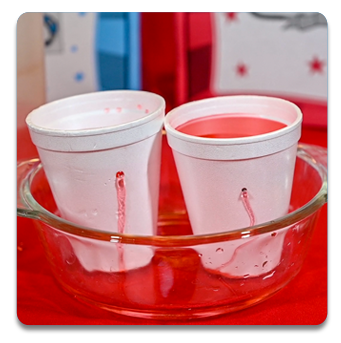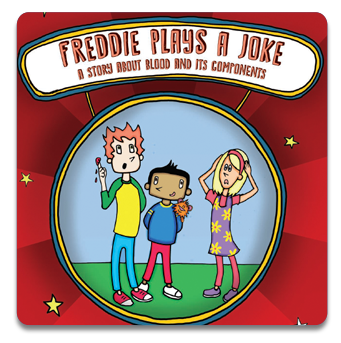Introduction
A healthy lifestyle, especially when started at a young age, goes a long way to preventing cardiovascular disease.
Objectives
To model blood flow in a healthy and unhealthy heart
Materials
Procedure
Use the pencil to carefully poke one hole in each Styrofoam® cup. Each hole should be approximately two inches from the bottom of the cup. One hole should be approximately 6mm in diameter and the other should be much smaller; approximately 3mm in diameter. Fill the pitcher with at least 32 ounces of water. Put five to six drops of red food coloring in the water and stir. Use more food coloring for a deeper red if needed. The water represents blood. Pour the water into each of the cups until they are full. What happens?
Conclusion
The water (blood) flows faster from the larger hole into the aluminum pan. The smaller hole represents a diseased heart. The water flows slower through the cup with the smaller hole. Blood travels through the body's circulatory system (heart, lungs, veins, and arteries) picking up nutrients and oxygen supplying them to other parts of the body. Veins carry blood to the heart, and arteries carry blood away from the heart. A common heart problem is coronary heart disease. Sometimes the blood vessels can become so blocked and narrowed by plaque, cholesterol, and other materials that the blood cannot flow properly. This can result in a heart attack! Eating healthy foods and exercising can help decrease the risk of having a heart attack

